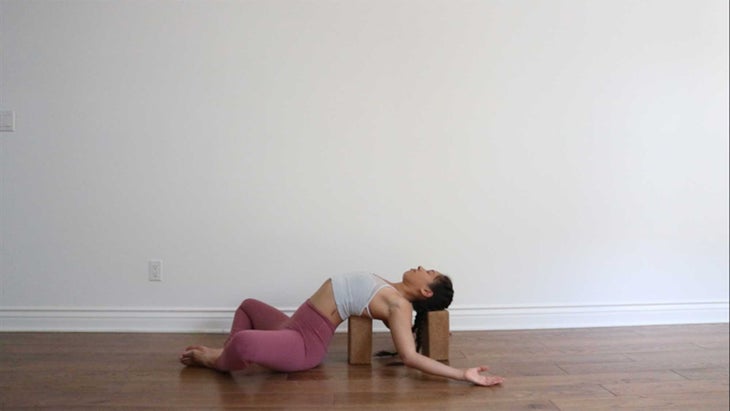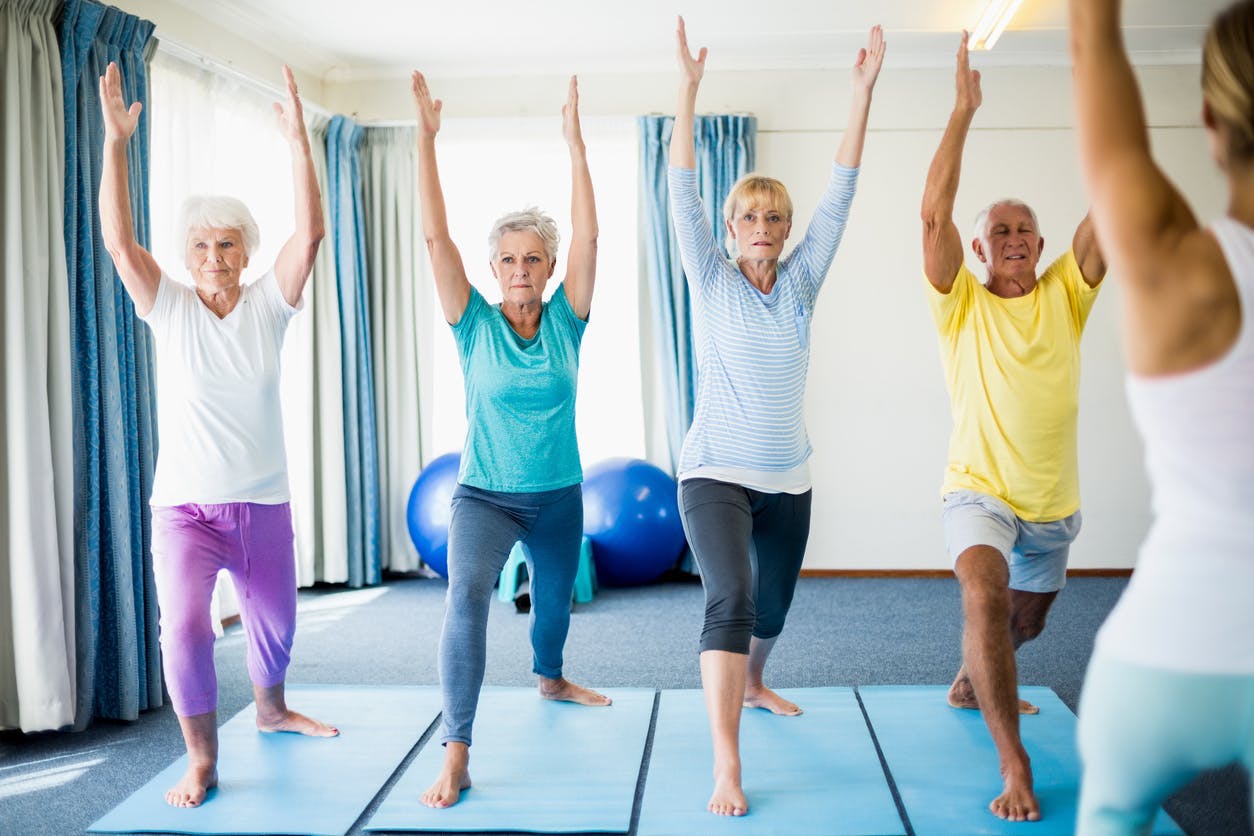
There are many potential pitfalls to yoga, despite the many benefits. Among the most common are joint injuries. Yoga injuries have been increasing in recent decades. These injuries can range in severity from mild to permanent disability.
Yoga injuries are difficult to measure accurately. There are many factors that affect the frequency of injuries. To determine the extent of these injuries, there have been many studies. These studies are often based on a case study technique. In these studies, study participants were asked to report their yoga injuries in order to determine the prevalence of these injuries. The outcome of the study could also have been affected by the study's methodology.

The best way to find out the prevalence of injuries in yoga is to look at the literature. There are a number of studies that have been published on yoga injuries. Most of these studies are either case studies, or series. Many of the studies were designed to evaluate the efficacy and effectiveness of a particular strategy. One study that looked at yoga injuries found that there was a wide range of activities that could cause injuries. However, injuries that occur while participating in a particular activity are more likely to be caused by yoga.
Researchers examined the incidence and severity of injuries among yoga students in the study "The effects yoga has on the incidence of musculoskeletal injury." They defined an injury as an event that led to a prolonged period of discomfort or suffering. A yoga-related injuries was an injury that prevents the participant from participating for three months. One-third of all participants had suffered from a yoga related injury over the course the study. Those with a previous musculoskeletal injury were more likely to experience a yoga-related injury.
Remember to pay attention to your body mechanics when doing any type of exercise. The body mechanics that are most important in this situation are the person's tolerance for pain. If a person cannot tolerate a particular position, that pose is a poor choice. To avoid injury, slow down your movements. This is especially true when you are performing a pose such a headstand.

Slowing down your movements is important, but so is ensuring that you are correct in your posture. Yoga poses that are too deep can cause hip injuries. To protect their students from injury, yoga instructors need to give their students a safety plan. Additionally, teachers should be able instruct their students to maintain a straight spine and shoulder alignment. This will decrease the risk of joint injuries.
FAQ
What happens to your body if you do yoga every morning?
It makes you feel calm, relaxed, and centered. It improves balance, posture, and flexibility.
You become more conscious of your body and how it reacts to movement. This awareness helps you to be more mindful and aware of your own body.
Yoga also improves your concentration.
Your mind will become sharper and more clear. It calms you nervous system. It reduces stress levels. It promotes peace and well-being.
What are the health benefits of yoga?
Yoga originated in India and is an ancient form of meditation. It was developed by Hindu monks over many centuries to improve mental and physical health. Many people use yoga for relaxation and stress relief. Some people believe that yoga improves strength and flexibility.
Yoga is great for older adults looking to be active. It improves coordination and balance. It can prevent falls and other injuries.
Yoga is good to your heart because it strengthens you cardiovascular system. If you have diabetes, high blood pressure or are overweight, this is a good option.
Yoga reduces stress and anxiety as well as depression and insomnia. Chronic pain can often result from these conditions, so yoga practice may prove especially helpful for people with arthritis or fibromyalgia.
As you age your muscles lose elasticity. Yoga can keep your muscles flexible and strong. As you get older, you'll notice that yoga increases your energy and stamina.
According to the National Institute on Aging regular yoga has been proven to reduce symptoms like fatigue and hopelessness. The institute also reports that yoga can help lower cholesterol levels and increase bone density.
Yoga can also relieve headaches, back pain, and other issues. Yoga's gentle pace and slow movements make it a great choice for relieving muscle spasms.
How long does yoga take?
Like any skill, it is important to train your brain in order to properly perform yoga. Once you have mastered the basics of yoga, you will be able practice at home with no difficulty.
Warm ups should take between 20-30 mins to get you started. You can then spend 5-10 min warming up by doing simple stretches. Move on to more challenging poses.
Once you have mastered the basics you can move on into intermediate classes. Here you'll learn advanced moves. For example, if yoga is something you're new to, you might start with the Tree (Vrksasana), or Mountain (Tadasana).
Are there many types of yoga?
The most popular type of yoga is Bikram Yoga (Bikram heated). Other forms include Hatha, Ashtanga, Vinyasa, Iyengar, Kundalini, Yin, Power Yoga, Flow Yoga, Reiki, Pilates, Restorative, Aerial, etc.
I already do some kind of physical exercise. Can I still benefit from yoga?
Yes! Yoga can help you train even if your physical activity is not too high. Yoga can be combined with other activities like running, cycling, lifting weights, and swimming to achieve greater results.
This is because yoga helps focus on correct breathing techniques which can help you burn calories quickly.
Yoga can also help you increase your endurance. Yoga has many benefits, so it doesn't matter if you're an advanced or beginner yogi.
Statistics
- About one in seven U.S. adults practiced yoga in the past 12 months, according to a 2017 national survey. (nccih.nih.gov)
- The people in the yoga group were 37 percent more likely to have quit smoking by the end of the 8-week program. (nccih.nih.gov)
- According to the Agency for Healthcare Research and Quality, falls are incredibly common among older adults in nursing facilities. Even the simplest ones can increase the risk of death (24). (healthline.com)
- Gentle yoga has been shown to ease some of the discomforts of tender, swollen joints for people with arthritis, according to a Johns Hopkins review of 11 recent studies. (hopkinsmedicine.org)
- A 2020 review of 27 studies (1,805 total participants) of yoga interventions in children or adolescents found reductions in anxiety or depression in 70 percent of the studies, with more promising results for anxiety. (nccih.nih.gov)
External Links
How To
Yoga can help menopause symptoms
Yoga is an ancient practice that originated in India and focuses on stretching, breathing, and meditation. It has been used to stay fit for thousands upon thousands of years. It has been increasingly popular in recent years as people look for alternative ways to stay healthy and active during times of stress or illness.
Yoga is all about physical poses (asanas), which are used to stretch muscles, improve posture, increase flexibility and increase flexibility. This can help relieve tension, increase strength, and endurance.
There are also many different types of yoga, including Ashtanga, Hatha, Vinyasa flow, Bikram, etc. Each type focuses specifically on one aspect of the body like breath, stretching, relaxation, and meditation.
All types of yoga are meant to help you achieve harmony within your body and mind. Yoga can improve your fitness, sleep quality, weight loss and energy levels as well as reduce stress levels.
Several studies have shown that yoga may be beneficial for treating conditions such as depression, anxiety, and insomnia. But, it is difficult to prove its effectiveness for other health problems such as menopause symptoms.
Yoga not only makes you happier but also helps you relax and manage stressful situations. This can be useful for women going through menopause.
Yoga can cause muscle soreness, so it is important to start at a low intensity level. You should consult your doctor if there are any concerns regarding your medical condition.